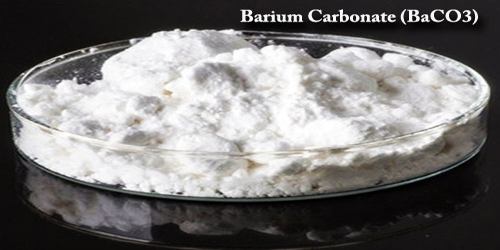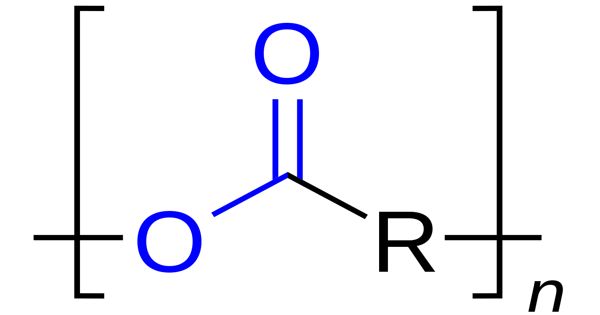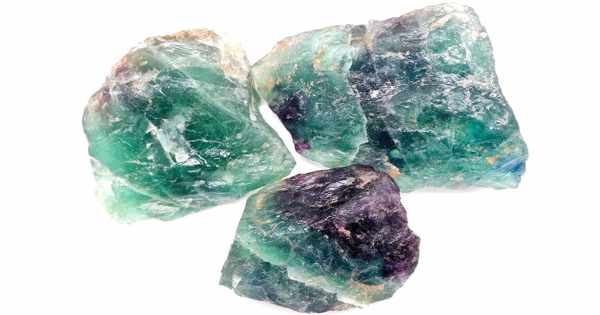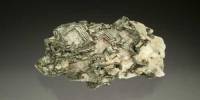Barium Carbonate (BaCO3) is a white powder, and it is also known as witherite. It is a chemical compound used in rat poison, bricks, ceramic glazes, and cement. The chemical formula for barium carbonate is BaCO3. It also occurs in a mineral known as witherite and also prepared from barytes through precipitation. It is toxic in nature.
Barium carbonate is insoluble in water and soluble in most acids, with the exception of sulfuric acid. Salts, basic, such as Barium carbonate, are generally soluble in water. The resulting solutions contain moderate concentrations of hydroxide ions and have pH’s greater than 7.0. They react as bases to neutralize acids. These neutralizations generate heat, but less or far less than is generated by neutralization of the bases in reactivity group 10 (Bases) and the neutralization of amines. They usually do not react as either oxidizing agents or reducing agents but such behavior is not impossible.
BaCO3 is also common in turquoise glazes. It should be kept under low quality below 20% and protective measures to be taken while handling the chemical compound. It is insoluble in water and soluble in most acids, with the exception of sulfuric acid. It has a specific gravity of 4.275. It is toxic by ingestion.
Witherite crystallizes in the orthorhombic system. The crystals are invariably twinned together in groups of three, giving rise to pseudo-hexagonal forms somewhat resembling bipyramidal crystals of quartz, the faces are usually rough and striated horizontally. It transforms into a hexagonal phase at 1084 K that changes into a cubic phase at 1254 K.
Chemical Properties of Barium Carbonate (BaCO3) –
Soluble calcium salts react with barium carbonate forms barium sulfate which remains in solution and calcium carbonate.
BaCO3 + CaSO4 → CaCO3 + BaSO4
Barium carbonate reacts with hydrochloric acid forming barium chloride and water and carbon dioxide.
BaCO3 + 2HCl → BaCl2 + H2O + CO2
Barium carbonate is made commercially from barium sulfide either by treatment with sodium carbonate at 60 to 70 °C (soda ash method) or bypassing carbon dioxide at 40 to 90 °C. In the soda ash process, solid or dissolved sodium carbonate is added to the barium sulfide solution, and the barium carbonate precipitate is filtered, washed, and dried.
Barium carbonate is an additive in oil-well drilling muds. The barite suspensions used in the oil well drilling industry can destabilize when soluble materials such as gypsum are present in the mud. The presence of gypsum leads to coagulation and a loss of consistency in the drilling muds. When added to the muds, barium carbonate precipitates the gypsum and prevents the destabilization of the barite suspension.
Barium carbonate (BaCO3) is mainly used for the manufacture of optical glass, funnels, and barium magnetic materials, the manufacture of other barium salts, ceramic, enamel, paint, welding rod feed. It is an important chemical raw material for the production of funnels, magnetic materials, and advanced optical glass. It is used for fireworks, flares preparation, also used for auxiliary material of ceramic coatings and optical glass.
Barium carbonate reacts with acids such as hydrochloric acid to form soluble barium salts, such as barium chloride:
BaCO3(s) + 2 HCl(aq) → BaCl2(aq) + CO2(g) + H2O(l)
However, the reaction with sulfuric acid is poor, because barium sulfate is highly insoluble.
BaCO3 also used for manufacturing electronic ceramics, PTC thermistor, capacitor of electronic components, it is mainly used in the manufacture of optical glass, CRT glass and barium magnetic materials and capacitors, it is also used for carburizing steel and metal surface treatment. It is the raw material of manufacturing other barium salts and ceramic, enamel, pigments, paints, rubber, electrode materials. It is also used as rodenticides and purifying agents, oxidation catalysts. It is mainly used in the manufacture of optical glass, CRT glass, and barium magnetic.
Poison by ingestion, intravenous, and intraperitoneal routes. Human systemic effects by ingestion: stomach ulcers, muscle weakness, paresthesias and paralysis, hypermotility, diarrhea, nausea or vomiting, lung changes. Experimental reproductive effects. Incompatible with BrF3 and 2- furanpercarboxylic acid.
Information Source:
















